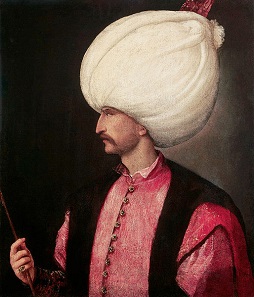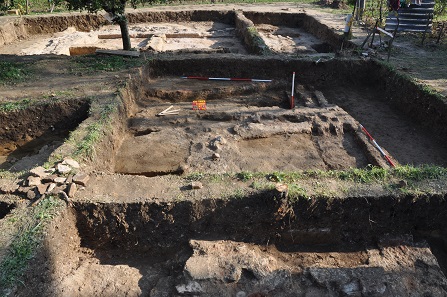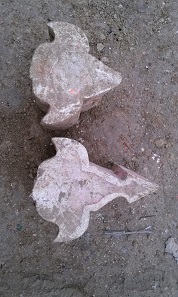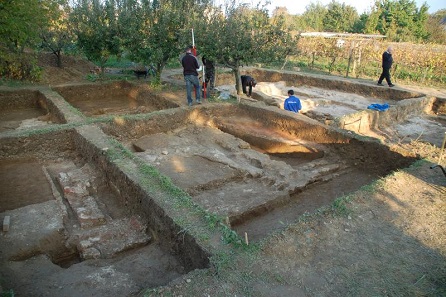Mausoleum of Suleiman the Magnificent’s heart discovered
by Annika Backe
June 2, 2016 – A spectacular find was made by archaeologists of the University of Pécs. Under the direction of Dr Norbert Pap, they discovered in the nearby town of Szigetvar in southern Hungary what seems to be the long sought-after burial place of the heart of Suleiman the Magnificent – 450 years after his death.
Suleiman the Magnificent on a painting attributed to Titian, ca. 1530.
Suleiman I is considered as one of the most important rulers of the Ottoman Empire. As the 10th Sultan, he reigned as long as 46 years, between 1520 and 1566. In his attempt to gain control of the world, he conquered parts of Europe, the Middle East, Asia and North Africa.
Suleiman I. Altin 1520, Misr. From Kuenker Auction 191 (2011), 5362.
Suleiman also cast an eye on Hungary that was ruled by the House of Habsburg. After his victory in the Battle of Mohács in 1526, Suleiman went towards Vienna three years later. He tried to seize the city in vain, however. In 1566, when he was already more than 70 years old, the Ottoman started another attempt and laid siege on the city of Szigetvar where he died on September 5, though. His body was brought to Constantinople, whereas his heart and his internal organs were allegedly placed in a golden vessel that was then buried where his tent had stood.
View of the excavation site with the architectural remnants of the mausoleum. Photo: Dr Norbert Pap.
In their search for Suleiman’s mortal remains, Dr Norbert Pap and his team carefully analyzed archival material. On a medieval map, they found a reference to a town called Turbek, an Ottoman settlement that was abandoned in 1680. The map is inscribed with the following words: “Here lies Suleiman.”
Palmette-shaped parts of the mausoleum’s architecture. Photo: Dr Norbert Pap.
As early as 2013, Dr Pap reported the successful discovery of Turbek. But it was not until the end of 2015 that he found the foundation walls of a building that is likely to have served as mausoleum for the heart of Suleiman.
The archaeological excavations will continue. Photo: Dr Norbert Pap.
It is hoped that, funded by the governments of Hungary and Turkey, further excavation campaigns will provide the ultimate proof.
Please find more information about the project of Dr Norbert Pap and the discovery here.
An account of Suleiman’s life and achievements is given in this Encyclopaedia Britannica entry.
And more about the connection between Suleiman and the French King Francis I you can read in this CoinsWeekly article.













